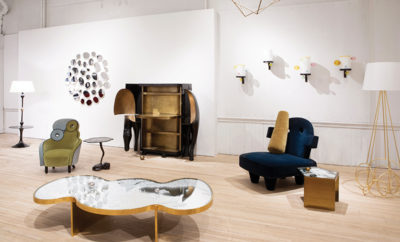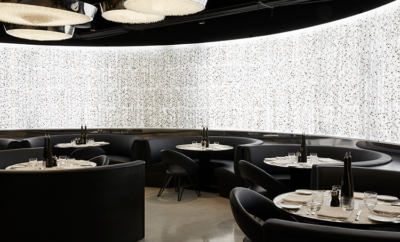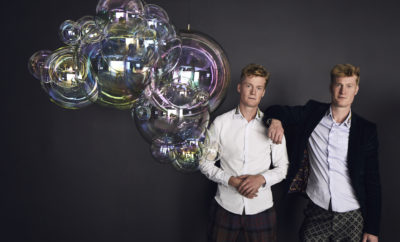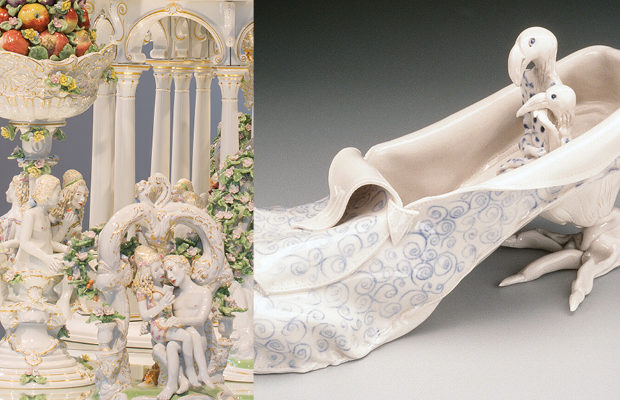 JENNA BOSCOM PHOTO/COURTESY MUSEUM OF ARTS AND DESIGN | COURTESY COILLE HOOVEN
JENNA BOSCOM PHOTO/COURTESY MUSEUM OF ARTS AND DESIGN | COURTESY COILLE HOOVEN
Exhibition
New Myths Wrought in Porcelain
SINCE THE EIGHTEENTH CENTURY, when porcelain figurines began to replace sugar sculpture as table decoration, artisans and artists have taken pleasure in the possibilities of telling stories with ceramic objects. Two shows by very different women artists, Chris Antemann and Coille Hooven, at New York’s Museum of Arts and Design until February 5, demonstrate the ceramists’ links to the historic tabletop narrative, while both also ingeniously bolt convention.
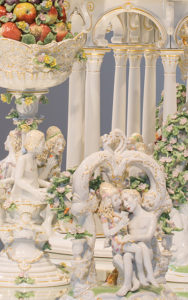
Chris Antemann | JENNA BOSCOM PHOTO/COURTESY MUSEUM OF ARTS AND DESIGN
Painted on all sides, patterned, gilded, and elaborately detailed with beribboned wigs and doll-size plates of blancmange, Antemann’s virtuosic pieces play off the tradition of miniature courtly or mythological porcelain groupings in a parody of gluttony and gender stereotyping. Male figures may be sparsely dressed or naked but her vixen-like females (whose faces resemble her own) take the lead, sometimes perching on tiny banquet tables as if taunting.
Forbidden Fruit was born out of collaboration with the Meissen porcelain manufactory, where Antemann was in residence from 2011 to 2014. Using the factory’s resources, she expanded her repertoire and built her massive Love Temple based on the monumental rococo works of Johann Joachim Kändler, as well as elaborate twotiered chandeliers embellished with fruit, birds, flowers, and contemplative lovers.
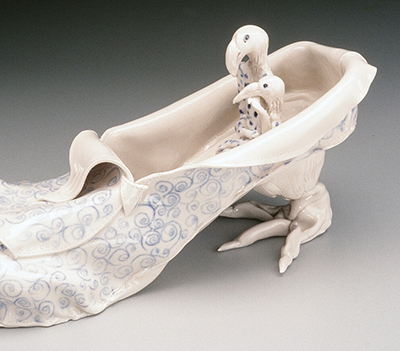
Coille Hooven | COURTESY COILLE HOOVEN
In contrast, the blue and white teapots, gloves, snakes, and fantastic figures with beaks in Coille Hooven: Tell It by Heart belong to a porcelain dreamscape. Her ceramic shoes and swans can be construed as boats or cars carrying whimsically surrealistic creatures off on uncanny journeys. Her plumped but sagging porcelain pillows are a tour de force of ceramic expertise. While Hooven assembles creatures and objects in a sometimes playful and sometimes worrisome phantasmagoria, she is also honoring the boundless possibilities of the medium. madmuseum.org


